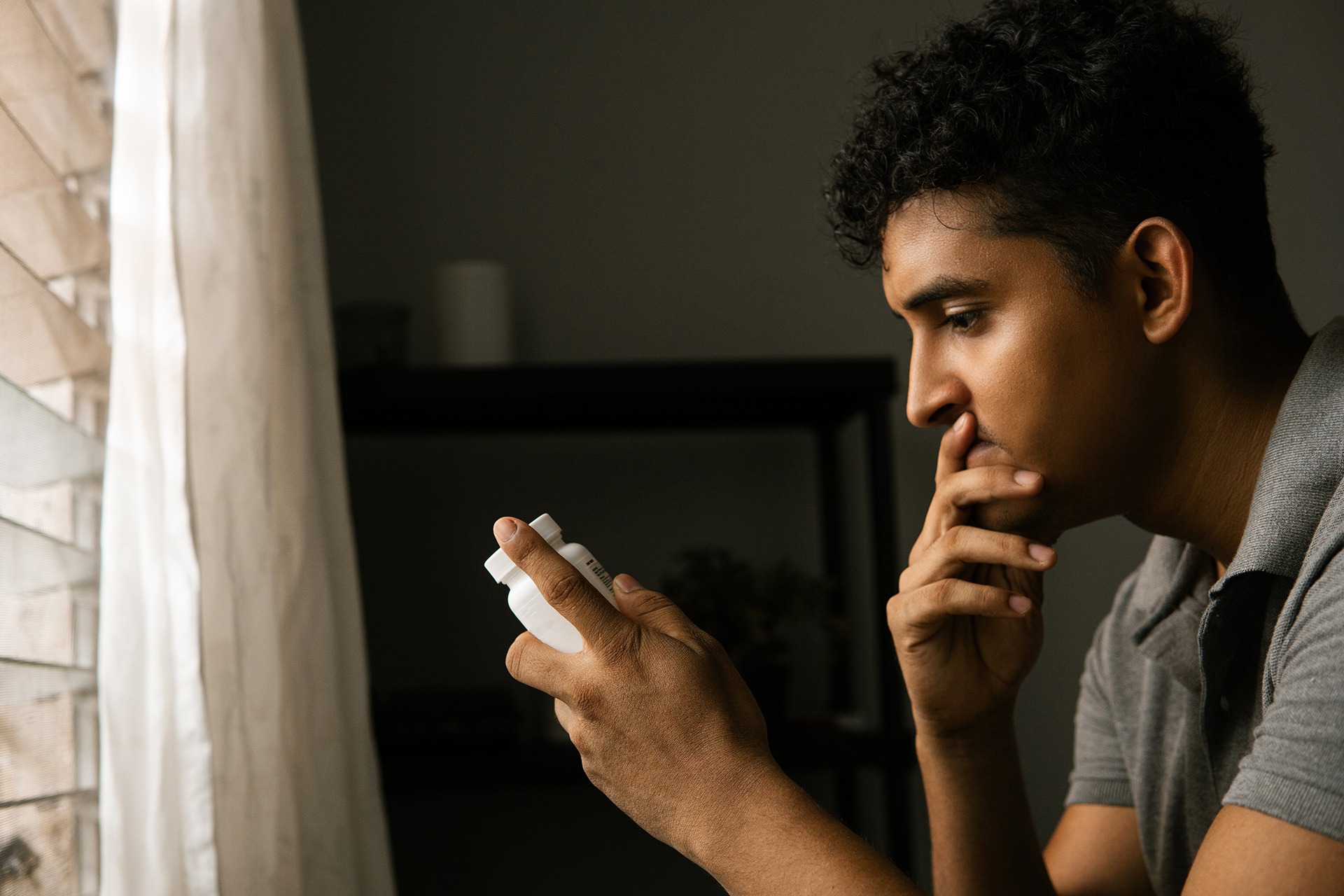Opioids are powerful drugs that change the way your brain responds to pain, making you feel better for a short time. People might want to know how long opioids stay in their system for reasons like drug testing, avoiding withdrawal, or making sure they’re safe for medical procedures. Understanding detection times can be important for anyone dealing with opioid use or supporting someone who is.
At Free by the Sea, we’re dedicated to helping people who are struggling with opioid dependence and want to provide clear, helpful information.
What are Opioids?
Jump to Section
Opioids are a group of drugs that relieve pain by attaching to specific parts of your brain and nervous system. They block pain signals and can also cause feelings of relaxation or euphoria. There are three main types based on how they’re made.
Natural opioids come directly from the opium poppy plant. These include morphine and codeine. Semi-synthetic opioids are made in laboratories using natural opioids as a starting point. Examples include heroin, hydrocodone, and oxycodone. Synthetic opioids are created entirely in laboratories without using any plant materials. Fentanyl, the synthetic opioid, is the most well-known.
Common prescription opioids that doctors prescribe for pain include:
– Hydrocodone (found in Vicodin, Norco)
– Oxycodone (found in OxyContin, Percocet)
– Morphine
– Codeine (found in some cough medicines)
Illegal opioids include heroin and street fentanyl. These substances are not prescribed by doctors and carry higher risks of addiction and overdose.
How Long Do Opioids Stay in Your System?
The answer depends on several factors, but most opioids can be detected in urine for 1-4 days after last use. Blood tests typically show opioids for up to 24 hours, while hair tests can detect them for up to 90 days.
Detection times vary based on which opioid was used, how much was taken, and individual factors like age and health. Here’s what you can expect for common opioids:
| Opioid | Urine Test | Blood Test | Saliva Test | Hair Test |
| Heroin | 1-3 days | 6 hours | 1 day | Up to 90 days |
| Morphine | 2-3 days | 12 hours | 1-2 days | Up to 90 days |
| Hydrocodone | 2-4 days | 24 hours | 12-36 hours | Up to 90 days |
| Oxycodone | 1-4 days | 24 hours | 1-2 days | Up to 90 days |
| Codeine | 1-2 days | 12 hours | 1 day | Up to 90 days |
| Fentanyl | 1-3 days | 12 hours | 1-2 days | Up to 90 days |
Heroin Detection Times
Heroin breaks down quickly in your body, but drug tests look for its breakdown products called metabolites. The main metabolite is 6-monoacetylmorphine (6-MAM), which is unique to heroin use. This helps tests distinguish between heroin use and prescription opioid use.
Heroin typically clears from urine within 1-3 days, but this can be longer for heavy users who may benefit from heroin detox. Blood tests only detect heroin for about 6 hours because it’s processed so quickly.
How Long Does Hydrocodone Stay in Your System?
Hydrocodone is one of the most commonly prescribed pain medications in the United States. It’s found in medications like Vicodin, Norco, and Lortab. When people ask “how long do pain pills stay in your system,” they’re often referring to hydrocodone.
Hydrocodone can be detected in urine tests for 2-4 days after the last dose. The exact time depends on factors such as the amount taken and the frequency of use. Extended-release versions may be detectable slightly longer than immediate-release forms.
Oxycodone Detection Windows
Oxycodone is another widely prescribed pain medication found in OxyContin and Percocet. When people wonder “how long does pain medication stay in your system,” oxycodone is often what they’re asking about.
Most people will test positive for oxycodone in urine for 1-4 days after their last dose. The drug typically clears from blood within 24 hours, making urine tests the preferred method for detecting recent use.
What Affects How Long Opioids Stay in Your System?

Several factors influence detection times. Understanding these can help explain why opioids might stay in one person’s system longer than another’s.
Dosage and Frequency of Use
Taking larger amounts or using opioids more frequently extends detection times. A single dose of morphine might clear from urine in 2-3 days, but daily use can be detected for up to a week. Heavy, long-term use creates a buildup that takes longer to eliminate.
Your Body's Processing Ability
Your liver and kidneys are responsible for breaking down and removing opioids. If these organs aren’t working well, opioids stay in your system longer. People with kidney problems may have opioids in their urine for twice as long as those with normal kidney function.
Age also plays a role. Older adults typically process drugs more slowly than younger people. This means opioids may be detectable longer in older individuals.
Body Composition and Health
People with higher body fat may store certain opioids longer, especially synthetic ones like fentanyl. Overall health conditions like dehydration or liver disease can also slow down how quickly your body eliminates opioids.
Key factors that extend detection times:
– Higher doses: More opioid in your system takes longer to clear
– Frequent use: Regular use creates buildup in your body
– Poor kidney function: Slows elimination through urine
– Older age: Natural slowing of metabolism
– Health problems: Conditions that affect how your body processes drugs
Drug Testing Methods for Opioids
Different types of tests can detect opioids for different lengths of time. Understanding these methods helps explain why detection windows vary.
Urine Testing
Urine tests are the most common way to check for opioids. They’re relatively inexpensive and can detect most opioids for several days after use. Standard urine tests look for opioid levels above 300 nanograms per milliliter.
When people ask, “How long does a pain pill stay in your urine?” the answer is typically 1-4 days for most prescription opioids. This makes urine testing useful for detecting recent use while giving the body time to process single doses.
Blood Testing
Blood tests show very recent opioid use, usually within the past 6-24 hours. These tests are more expensive and invasive than urine tests, so they’re used less frequently. Blood testing might be used in emergency situations or when very recent use needs to be confirmed.
Hair Testing
Hair tests can detect opioid use for up to 90 days, making them useful for identifying patterns of use over time. However, hair tests are less reliable for detecting very recent use since it takes time for drugs to appear in new hair growth.
Hair testing can sometimes produce false positives from environmental exposure, though this is less common with opioids than with other drugs.
Why Do People Want to Know Detection Times?
Understanding how long opioids stay in your system serves several practical purposes. People often search for this information when facing specific situations, including when preparing to enter opioid addiction treatment.
Drug testing is one of the most common reasons. Employers, courts, and treatment programs may require testing. Knowing detection windows helps people understand what to expect from these tests.
Medical safety is another important reason. Doctors may ask about recent opioid use before surgery or when prescribing other medications. Opioids can interact dangerously with anesthesia and other drugs.
Some people use this information to help manage withdrawal symptoms. Understanding when opioids might clear from their system can help them prepare for the physical discomfort that may follow.
Signs of Opioid Problems

Recognizing when opioid use has become problematic can be difficult. Unlike alcohol, which has obvious signs of intoxication, opioid misuse can be harder to spot initially.
Physical signs may include:
– Drowsiness: Appearing tired or “nodding off” frequently
– Constricted pupils: Very small pupils even in dim light
– Slowed breathing: Breathing that seems shallow or slow
– Poor coordination: Difficulty with balance or fine motor skills
Behavioral changes often include:
– Doctor shopping: Visiting multiple doctors for prescriptions
– Running out early: Finishing prescriptions before they’re due for refill
– Social withdrawal: Avoiding family and friends
– Neglecting responsibilities: Problems at work, school, or home
If someone is displaying these signs, it may indicate they’re struggling with opioid use and could benefit from professional help.
FAQs About How Long Opioids Stay in Your System
Can drinking water help opioids leave your system faster?
Drinking extra water may dilute your urine, but it doesn’t actually speed up how quickly your body eliminates opioids. Your liver and kidneys determine the pace of opioid removal, and this process can’t be rushed by drinking more fluids.
Do prescription opioids show up the same as illegal opioids on drug tests?
Most standard drug tests detect the presence of opioids, but can’t tell whether they came from a prescription or an illegal source. However, some specialized tests can distinguish between different types of opioids, which may help identify the specific substance used.
Will eating poppy seeds cause a positive opioid test?
Yes, eating foods containing poppy seeds can cause a positive result on opioid drug tests for up to 48 hours. This happens because poppy seeds contain small amounts of morphine and codeine. Many testing facilities now use higher cutoff levels to reduce these false positives.
How long do synthetic opioids like fentanyl stay detectable?
Fentanyl typically appears in urine tests for 1-3 days, similar to other opioids. However, some fentanyl analogs (chemically similar drugs) may have different detection windows. Hair tests can detect fentanyl for up to 90 days.
Do extended-release opioids stay in your system longer than immediate-release versions?
Extended-release formulations are designed to release medication slowly over time, which can slightly extend detection windows. However, the difference is usually only a day or two compared to immediate-release versions of the same drug.
If you or someone you care about is struggling with opioid use, help is available. Opioid addiction is a medical condition that responds well to proper treatment. At Free by the Sea, we provide comprehensive care that addresses both the physical and emotional aspects of opioid dependence.
Our treatment approach combines medication-assisted treatment with counseling and support services. We understand that recovery is a personal journey, and we work with each individual to develop a personalized treatment plan. Contact us today to learn more about our services and how we can help you or your loved one start the path to recovery.

Dr. Richard Crabbe joined our team in 2019 as our psychiatrist and medical director. He attended the University of Ghana Medical School where he became a Medical Doctor in 1977. From 1978 through 1984, he was a medical officer in the Ghana Navy and provided a variety of services from general medicine to surgeries. He received his Certificate in General Psychology from the American Board of Psychology and Neurology in 2002.

 October 14th, 2025
October 14th, 2025










